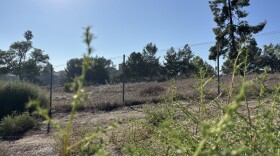JOHN YDSTIE, host:
Earlier this week in his NPR National Geographic Radio Expedition, John Burnett reported from Guatemala on efforts to save ancient Mayan sites from tomb looters.
Traveling with him was WEEKEND EDITION's Peter Breslow. Here is a page for his Producer's Notebook.
PETER BRESLOW: It's actually not that far once you leave the paved road in Pasa Caballos and head toward the archeological site known as El Peru-Waka. But you really have to want to get there.
(Soundbite of car engine noise)
BRESLOW: Even in the dry season, this route through northern Guatemala's Paten region is a quagmire, just itching to swallow up anything that comes by, whether a four-wheel drive or not.
Fortunately for us, driver Martin Asturias(ph) is behind the wheel of his canary yellow pickup. Actually, he is hanging on the open truck door. He's got a leg stretched out to reach the gas pedal, one hand on the steering wheel and the other operating a winch whose cable he's wrapped around a tree on solid ground. Like a master dancer maneuvering a slightly awkward partner through a difficult routine, he cajoles his truck through the muck.
A couple of hours later, we arrived at the camp of archeologist David Freidel. For five years, he's been coming here to explore Mayan tombs and make sense of their ancient hieroglyphics. He gets to share his workspace with fire ants, fertile ants, pit vipers and squadrons of spider and howler monkeys. There is also a dwindling number of scarlet macaws.
(Soundbite of cawing scarlet macaws)
Dr. DAVID FREIDEL (Anthropologist, Southern Methodist University): The scarlet macaw represents to the Maya, the spirit companion of Itzamna, the great shaman creator god who created the whole world. So the Maya really did believe that these animals were representations of the divine.
BRESLOW: The birds are a huge and wondrous red, yellow and royal blue. According to Freidel, they mate for life and can live to be 80 years old. And because of encroaching development, they are almost extinct in Central America.
Dr. FREIDEL: There are probably 200 or 300 scarlet macaws left and we are in a desperate race for time to see if we can save this rainforest habitat for these birds because with the death of the forest, you will certainly see the death of the most important animal that the ancient Maya revered.
BRESLOW: As we depart the jungle driving the same swamping route through which we entered and left to ponder the macaws and the Maya, the ancient civilization disappeared mysteriously long ago. But at least, they left behind their artifacts for us to examine. Once the last scarlet macaw vanishes from this jungle, there will be little evidence they ever existed here at all.
YDSTIE: NPR's Peter Breslow. You can hear John Burnett's tomb looters stories at npr.org. Transcript provided by NPR, Copyright NPR.






